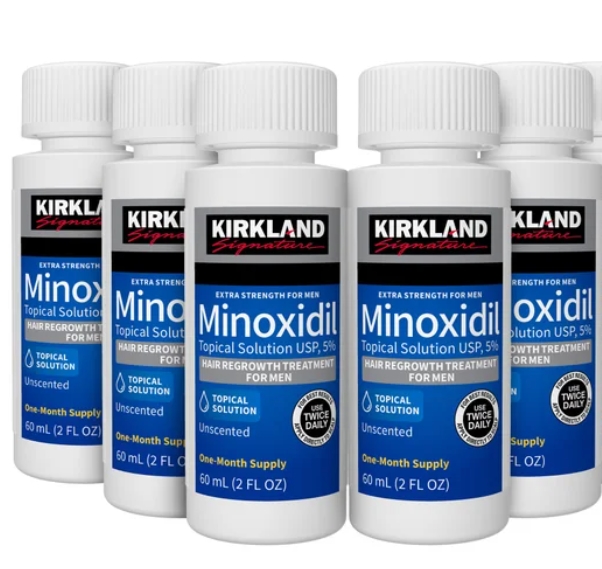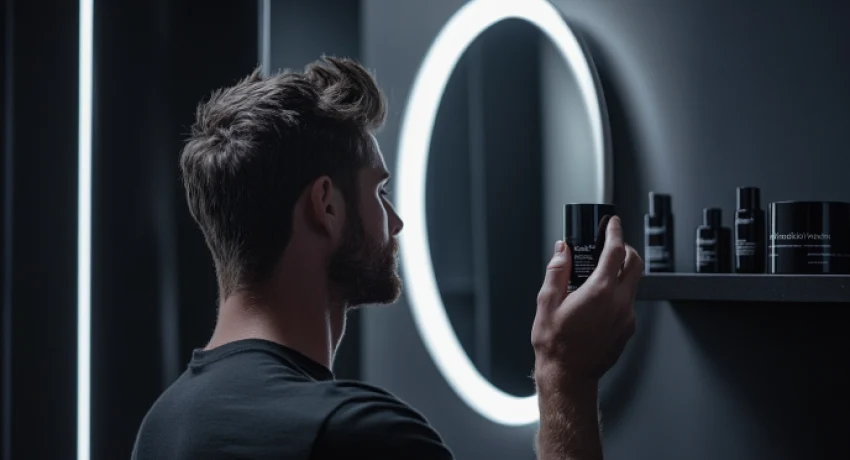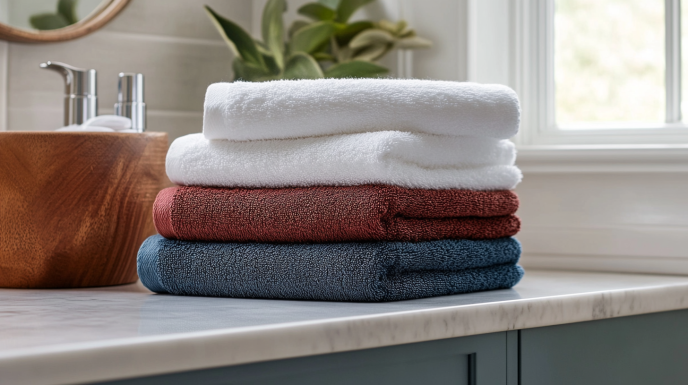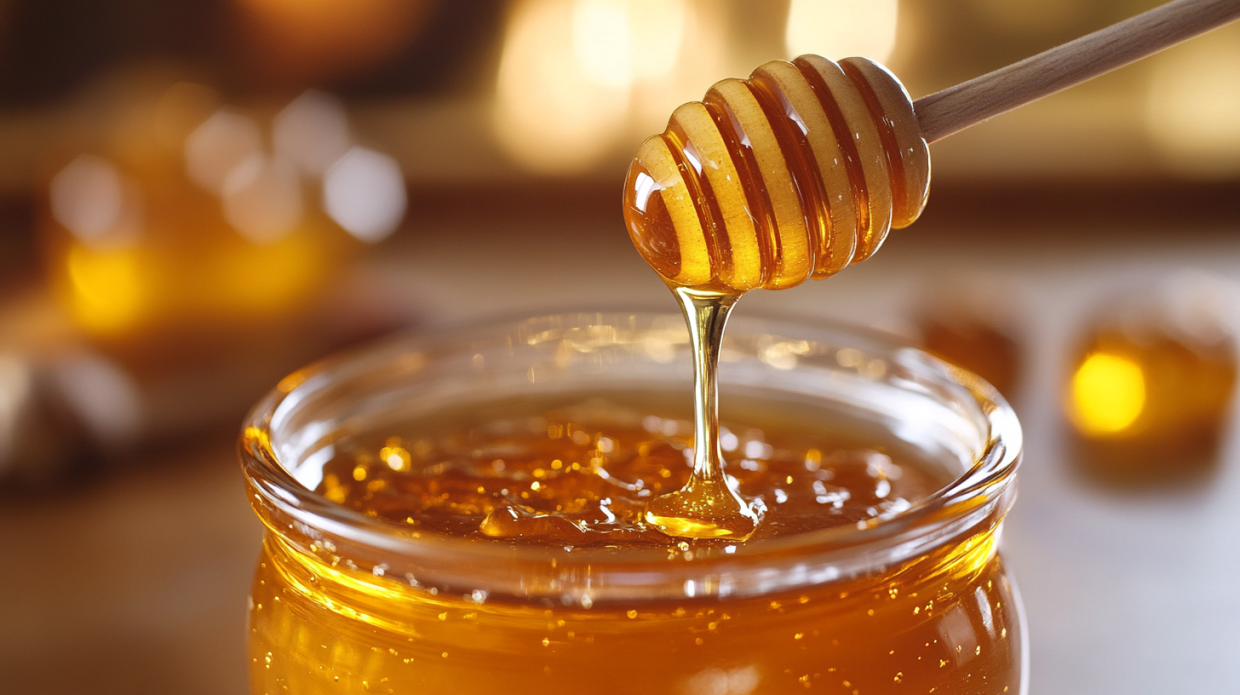
Kirkland Signature Hair Regrowth Treatment Extra Strength for Men, 5% Minoxidil Topical Solution, 2 fl oz, 6-pack
- (6) 2 fl oz. Topical Solution
- 5% Minoxidil
- Hair Regrowth Treatment
Unlocking the Secrets of an Affordable Hair Loss Solution
Hair loss can be a deeply personal journey—one filled with trial and error, hope and disappointment. Whether you’ve just noticed thinning hair or you’ve been battling baldness for years, finding an effective, affordable solution often feels like searching for a needle in a haystack. Enter Kirkland Minoxidil: the budget-friendly hair regrowth treatment that’s been changing lives and hairlines for decades.
As someone who’s spent countless hours researching hair loss solutions (and yes, trying many of them myself), I’ve come to appreciate the value of straight talk about what works and what doesn’t. Kirkland Minoxidil stands out as one of the most scientifically-backed and cost-effective hair regrowth treatments available today, yet many people still have questions about how to use it properly, what results to expect, and whether it’s right for them.
In this comprehensive guide, we’ll dive deep into everything you need to know about Kirkland Minoxidil—from its humble beginnings to practical application tips, potential side effects, and realistic expectations. So settle in as we explore this popular hair loss treatment that might just change your relationship with your mirror.
What Exactly Is Kirkland Minoxidil?
At its core, Kirkland Minoxidil is a topical hair regrowth treatment manufactured under the Kirkland Signature brand, which is the private label of Costco Wholesale Corporation. The product contains minoxidil as its active ingredient—the same FDA-approved compound found in name-brand treatments like Rogaine.
Kirkland Minoxidil didn’t start out as a hair loss treatment. Like many pharmaceutical breakthroughs, its hair-growing properties were discovered almost by accident. Minoxidil was originally developed as an oral medication for treating high blood pressure in the 1970s. During clinical trials, researchers noticed an interesting side effect: patients were growing extra hair. This serendipitous discovery led to the development of topical minoxidil for treating hair loss, which the FDA approved in 1988.
The Kirkland version entered the market as a generic alternative to more expensive brands, offering the same active ingredient at a fraction of the price. Today, it’s available in both 2% and 5% strengths and comes in liquid solution or foam formulations.
The Science Behind the Solution: How Does Kirkland Minoxidil Work?
Understanding how minoxidil works helps explain both its effectiveness and limitations. While scientists haven’t pinpointed the exact mechanism with 100% certainty, the consensus points to several key processes:
First, minoxidil acts as a potassium channel opener, which enhances blood flow to hair follicles. This increased circulation delivers more oxygen and nutrients to the follicles, creating an environment more conducive to hair growth.
Second, minoxidil appears to extend the anagen (growth) phase of the hair cycle while shortening the telogen (resting) phase. This means your hair spends more time growing and less time resting before falling out.
Third, it may stimulate dormant hair follicles, essentially “waking them up” and encouraging them to begin producing hair again.
What’s fascinating about minoxidil is that it works independently of hormonal factors, unlike some other hair loss treatments that target DHT (dihydrotestosterone)—the hormone primarily responsible for male pattern baldness. This is why minoxidil can work for different types of hair loss and for both men and women.
However, this also explains one of its limitations: minoxidil works best for people whose hair follicles aren’t completely dead but are simply dormant or miniaturized. Once follicles have completely died, no amount of minoxidil will revive them—which is why early intervention typically yields better results.
Kirkland Minoxidil vs. Rogaine: What’s the Difference?
One of the most common questions people ask is how Kirkland Minoxidil compares to Rogaine. The short answer? They’re essentially the same product with different packaging and price points.
Rogaine (manufactured by Johnson & Johnson) was the first FDA-approved topical minoxidil product for hair loss. As the original brand-name treatment, it typically commands premium pricing. Kirkland Minoxidil, as a generic alternative, contains the exact same active ingredient in the same concentrations but costs significantly less.
Here’s a straightforward comparison:
Active ingredient: Both contain minoxidil (2% or 5% depending on the formulation)
Effectiveness: Studies show no significant difference in efficacy
Price: Kirkland typically costs 50-60% less than Rogaine
Availability: Rogaine is more widely available in retail stores; Kirkland is primarily sold at Costco and online
Additional ingredients: Minor differences in inactive ingredients, which may affect things like drying time or scent
Some users report subtle differences in texture or how quickly the product dries, but in terms of hair regrowth results, scientific evidence suggests they perform equally well. The choice often comes down to budget and convenience.
Where to Buy Kirkland Minoxidil and How Much It Costs
Finding Kirkland Minoxidil is relatively straightforward, though it’s not available everywhere. As Costco’s store brand, the most obvious place to purchase it is at Costco warehouse locations. A Costco membership technically isn’t required to purchase pharmacy items, but policies may vary by location.
Beyond Costco, Kirkland Minoxidil is widely available online through various retailers:
- Amazon (often with Prime shipping)
- eBay (though buyers should verify seller ratings)
- Walmart.com
- Various online pharmacies and health stores
When it comes to pricing, Kirkland Minoxidil offers significant savings compared to name-brand alternatives. A six-month supply of Kirkland Minoxidil 5% solution typically ranges from $25-35, while the same supply of Rogaine often costs $50-60 or more.
The foam version tends to be slightly more expensive than the liquid, usually by about 15-20%. While pricing fluctuates, you can generally expect to pay around $30-45 for a three-month supply of Kirkland Minoxidil foam.
For budget-conscious consumers, buying in bulk can offer additional savings. Some online retailers offer discounted rates when purchasing multiple six-month supplies at once, which can be a good strategy if you’re committed to long-term use.
Kirkland Minoxidil Varieties: Liquid vs. Foam, 2% vs. 5%
Kirkland Minoxidil comes in several formulations, each catering to different preferences and needs. Understanding the differences can help you choose the right version for your situation.
Liquid vs. Foam:
Liquid Solution:
- Generally less expensive
- Easier to apply directly to the scalp, especially in areas with longer hair
- Contains propylene glycol, which may cause scalp irritation for some users
- Takes longer to dry and can leave hair looking greasy
- More precise dosing with the included dropper
Foam:
- Dries faster (typically 2-4 minutes vs. 10-15 for liquid)
- Less likely to cause irritation (doesn’t contain propylene glycol)
- Leaves less residue and greasiness
- Easier to apply to larger areas quickly
- Can be more difficult to apply directly to the scalp through thick hair
- Slightly more expensive
2% vs. 5% Concentration:
2% Minoxidil:
- Originally the only FDA-approved strength
- Typically recommended for women
- May cause fewer side effects
- Can be effective for early-stage hair thinning
- Studies show it’s less effective than 5% for most users
5% Minoxidil:
- Approved for men (though many women use it off-label)
- Studies show approximately 45% more effective than 2%
- Higher likelihood of side effects
- Recommended for moderate to significant hair loss
- Standard concentration for beard growth applications
It’s worth noting that while the 5% solution is officially FDA-approved only for men, many dermatologists recommend it for women with significant hair loss who haven’t responded to the 2% formula. However, women who are pregnant or nursing should avoid minoxidil entirely.
How to Use Kirkland Minoxidil Properly: Application Guide
Proper application is crucial for getting the best results from Kirkland Minoxidil. Following the correct technique not only maximizes effectiveness but also minimizes potential side effects.
For Liquid Solution:
- Start with dry or slightly damp hair and scalp
- Fill the dropper to the 1ml line (one dose)
- Apply directly to areas experiencing hair loss or thinning
- Use your fingertips to gently massage the solution into your scalp
- Wash hands thoroughly after application
- Allow the solution to dry completely before using styling products or going to bed
For Foam:
- Start with dry hair and scalp
- Rinse the cap with cold water and dry it (cold keeps the foam from melting too quickly)
- Dispense half a capful of foam onto your fingers
- Apply the foam directly to thinning areas, working from the center outward
- Gently massage into the scalp until the foam disappears
- Wash hands thoroughly after application
General Application Guidelines:
- Apply twice daily, ideally 12 hours apart (morning and evening)
- Be consistent—missing applications reduces effectiveness
- Don’t apply more than the recommended dose; more isn’t better and increases side effect risk
- Avoid washing your hair or sweating heavily for at least four hours after application
- Don’t use hairdryers on high heat immediately after application
- Continue your normal hair washing routine—daily or every other day is fine
One common mistake is applying minoxidil to wet hair, which dilutes the solution and can reduce its effectiveness. Another is applying it to the hair rather than the scalp—remember, minoxidil works at the follicle level, so it needs to make contact with your scalp to be effective.
Setting Realistic Expectations: Timeline for Results
Patience is perhaps the most important ingredient when using Kirkland Minoxidil. Hair growth is a slow process, and seeing noticeable results takes time.
The Typical Timeline:
First 2-4 weeks:
- Little to no visible change
- Some users experience initial shedding (more on this below)
- Possible scalp irritation or itchiness as skin adjusts
1-3 months:
- Initial shedding typically subsides
- Some users may notice very fine, thin hairs (vellus hairs) appearing
- Reduction in hair loss rate for many users
3-6 months:
- Vellus hairs begin transforming into thicker terminal hairs
- Noticeable improvement in density for most responsive users
- Areas that were thinning may show significant improvement
6-12 months:
- Maximum results typically achieved around this time
- Hair thickness and density continue to improve
- Pattern of regrowth becomes more established
It’s important to understand that results vary significantly from person to person. Factors affecting your response include:
- Age (younger people typically respond better)
- Duration of hair loss (recent loss responds better than long-term)
- Type of hair loss (androgenetic alopecia responds better than scarring alopecia)
- Consistency of application
- Individual biology and genetics
About 40% of men experience moderate to significant regrowth, another 40% maintain their hair and prevent further loss, and approximately 20% don’t respond noticeably. Women generally have slightly better response rates, with about 60% experiencing moderate to significant improvement.
The Dreaded Shedding Phase: What You Need to Know
Perhaps one of the most alarming experiences for new minoxidil users is the initial shedding phase. Imagine starting a hair loss treatment only to see more hair falling out—it seems counterintuitive and downright frightening!
This phenomenon, which affects roughly 20-25% of minoxidil users, typically occurs 2-4 weeks after beginning treatment. During this phase, you might notice increased hair fall when showering, brushing, or styling your hair.
Before you panic and toss your Kirkland Minoxidil in the trash, understand that this shedding is actually a positive sign. It indicates the treatment is working by shifting your hair follicles from the resting (telogen) phase to the growth (anagen) phase. Essentially, the weaker hairs fall out to make way for stronger, healthier hairs.
This shedding phase typically lasts 2-4 weeks, though in some cases it may continue for up to 6 weeks. After this period, shedding should decrease to normal or below-normal levels as new growth begins.
If shedding continues beyond two months or seems excessive, it may be worth consulting a dermatologist to rule out other causes of hair loss.
Potential Side Effects: What to Watch For
Like any medication, Kirkland Minoxidil can cause side effects, though most are mild and temporary. Being aware of potential adverse effects helps you monitor your experience and know when to seek medical advice.
Common Side Effects (affecting 1-5% of users):
- Scalp irritation, itching, or redness
- Dry scalp or flaking
- Increased initial hair shedding
- Unwanted hair growth on adjacent areas (if the solution drips or is transferred)
Less Common Side Effects (affecting less than 1% of users):
- Headaches
- Dizziness or lightheadedness
- Rapid or irregular heartbeat
- Swelling in hands, feet, or face
- Sudden unexplained weight gain
- Chest pain
The more serious side effects typically occur when too much minoxidil is absorbed into the bloodstream. This can happen if you:
- Apply more than the recommended dose
- Apply it to irritated or damaged skin
- Have underlying conditions that increase absorption
To minimize side effects:
- Always follow the recommended dosage
- Don’t apply to broken, sunburned, or irritated skin
- Wait until your scalp is completely dry after showering
- Avoid applying other scalp treatments simultaneously unless advised by a doctor
- If you experience scalp irritation, consider switching to the foam version, which lacks propylene glycol (a common irritant)
If you experience any of the more serious side effects like chest pain, rapid heartbeat, or significant swelling, discontinue use and seek medical attention immediately.
Special Considerations for Women Using Kirkland Minoxidil
While minoxidil is one of the few hair loss treatments clinically proven effective for women, there are some special considerations for female users.
First, the FDA has only approved the 2% solution for women, though many dermatologists prescribe the 5% off-label for cases of significant hair loss. Studies show the 5% solution is more effective, but it also carries a higher risk of side effects like facial hair growth.
Second, women of childbearing age should be aware that minoxidil is categorized as pregnancy category C, meaning risk cannot be ruled out. Women who are pregnant, planning to become pregnant, or breastfeeding should avoid minoxidil completely.
Third, female pattern hair loss often differs from male pattern baldness. Women typically experience diffuse thinning across the crown rather than receding from the hairline. This means application techniques may need to be adjusted to cover a broader area.
Fourth, hormonal fluctuations due to pregnancy, menopause, or thyroid issues often contribute to female hair loss. Minoxidil doesn’t address these underlying hormonal causes, so some women may benefit from combining minoxidil with treatments that address hormonal factors.
Finally, women may need to adjust their hair care routines when using minoxidil. The liquid form can be particularly challenging with longer hairstyles, making the foam version a popular choice. Styling products and techniques may need adjustment to accommodate twice-daily application.
Beyond the Scalp: Using Kirkland Minoxidil for Beard Growth
While not FDA-approved for this purpose, minoxidil has gained popularity as a beard growth stimulant. The off-label use of Kirkland Minoxidil for enhancing facial hair has created a substantial online community sharing techniques and results.
For beard application, most users opt for the 5% solution, applying it once or twice daily to areas where they want increased growth. Results typically begin appearing after 3-4 months of consistent use, with full results around 6-12 months.
A few important considerations for beard application:
- Skin absorption is typically higher on the face than the scalp, potentially increasing the risk of side effects
- Unwanted hair may appear on adjacent areas like the upper cheeks or neck
- The liquid solution may be easier to apply precisely to facial areas than foam
- Skin irritation can be more noticeable and bothersome on the face
- Results are highly variable and depend on your genetic potential for beard growth
If you choose to try Kirkland Minoxidil for beard enhancement, starting with once-daily application can help minimize side effects while you gauge your response. And as with scalp application, consistency is key—intermittent use yields disappointing results.
Long-Term Use: Safety and Maintenance
One of the most important aspects of minoxidil to understand is that it’s not a permanent cure for hair loss but rather an ongoing treatment. Once you stop using minoxidil, any new hair growth will gradually revert, typically returning to your pre-treatment state within 3-6 months.
This raises questions about the safety of long-term use. Fortunately, minoxidil has one of the longest safety records of any hair loss treatment. Studies following users for over a decade show no significant long-term health risks associated with continued topical application.
For those committed to maintaining their results, minoxidil becomes part of a daily routine—like brushing teeth or washing your face. Many long-term users develop strategies to make application more convenient:
- Keeping bottles in both the bathroom and bedroom for morning and evening applications
- Setting phone reminders to maintain consistency
- Incorporating application into existing morning and evening routines
- Using travel-sized containers for overnight trips
Over time, many users find they can maintain their results with slightly less frequent application—some successfully switch to once-daily use after achieving their desired results. However, this should be approached cautiously, as individual responses vary.
Complementary Treatments: Maximizing Your Results
While Kirkland Minoxidil can be effective on its own, many users achieve better results by combining it with complementary treatments that address hair loss through different mechanisms.
Popular Combinations Include:
Minoxidil + Finasteride: Finasteride (brand name Propecia) is an oral medication that blocks DHT production, addressing the hormonal aspect of male pattern baldness. While minoxidil stimulates growth, finasteride helps prevent further loss, making them powerful companions.
Minoxidil + Ketoconazole Shampoo: Nizoral or similar ketoconazole shampoos have mild anti-androgenic properties and help control scalp inflammation and fungal issues that can contribute to hair loss.
Minoxidil + Dermarolling/Microneedling: This increasingly popular combination involves using a dermaroller or microneedling device to create tiny punctures in the scalp before applying minoxidil. Studies suggest this can significantly increase minoxidil absorption and effectiveness. (Important note: Apply minoxidil 24 hours after dermarolling, not immediately, to prevent excessive absorption.)
Minoxidil + Nutritional Supplements: Deficiencies in certain vitamins and minerals can contribute to hair loss. Supplements containing biotin, zinc, iron, vitamin D, and omega-3s may support healthy hair growth when combined with minoxidil.
Minoxidil + Low-Level Laser Therapy (LLLT): Devices like laser caps or combs use red light therapy to stimulate follicles through a different mechanism than minoxidil, potentially offering synergistic benefits.
Always consult with a healthcare provider before combining treatments, especially prescription medications like finasteride. What works best varies significantly from person to person, and some combinations may increase the risk of side effects.
Troubleshooting Common Issues with Kirkland Minoxidil
Even with proper application, you might encounter some challenges when using Kirkland Minoxidil. Here are solutions to common problems:
Problem: Excessive Scalp Dryness or Irritation
Solution: Consider switching from liquid to foam formulation, which lacks propylene glycol. Alternatively, try applying a small amount of fragrance-free moisturizer to your scalp a few hours after minoxidil application.
Problem: Liquid Dripping Down Face or Neck
Solution: Apply smaller amounts at a time and wait for each application to dry before adding more. Tilting your head in the direction opposite to where you’re applying can also help control dripping.
Problem: Difficulty Applying Through Thick Hair
Solution: Part your hair in multiple locations to create access to the scalp. For those with particularly thick hair, the liquid solution with its dropper applicator often works better than foam.
Problem: Greasy or Matted Hair After Application
Solution: Apply minoxidil at least 2-3 hours before bedtime to allow it to fully dry. Morning application is best done after showering but with enough time for hair to fully dry before applying.
Problem: Forgetting Applications
Solution: Set phone reminders or link application to existing habits like brushing teeth. Keeping minoxidil visible in your bathroom can serve as a visual reminder.
Problem: Not Seeing Results After 6 Months
Solution: Evaluate your application technique and consistency. Consider adding complementary treatments or consulting a dermatologist to rule out other causes of hair loss that might not respond to minoxidil.
Conclusion: Is Kirkland Minoxidil Right for You?
After exploring Kirkland Minoxidil from every angle—from its scientific mechanism to application techniques, potential side effects, and complementary treatments—the ultimate question remains: Is it right for you?
The answer depends on several factors:
Kirkland Minoxidil may be right for you if:
- You’re experiencing early to moderate androgenetic alopecia (pattern baldness)
- You’re committed to twice-daily application for the long term
- You’re looking for an affordable, scientifically-backed treatment
- You’re realistic about potential results and understand it works better for maintaining hair than regrowing completely bald areas
- You’re patient enough to wait 4-6 months for noticeable results
Kirkland Minoxidil may not be ideal if:
- You have completely bald areas with no fine hairs present
- You can’t commit to consistent application
- You’ve had previous allergic reactions to minoxidil products
- You’re looking for a permanent, one-time solution
- You have hair loss from scarring or certain autoimmune conditions
Remember that hair loss treatment is highly individual, and what works wonderfully for one person may yield modest results for another. For many people, Kirkland Minoxidil represents an accessible starting point in their hair restoration journey—one that provides a reasonable chance of improvement without breaking the bank.
If you’re on the fence, consider that Kirkland Minoxidil’s relatively low cost and established safety profile make it a low-risk option to try for at least six months, the minimum time needed to fairly evaluate its effectiveness for your specific situation.
Whatever you decide, approaching hair loss proactively rather than passively often leads to better outcomes. Whether Kirkland Minoxidil becomes your hair’s new best friend or just one chapter in your treatment journey, taking that first step is often the hardest—and most important—part of the process.




